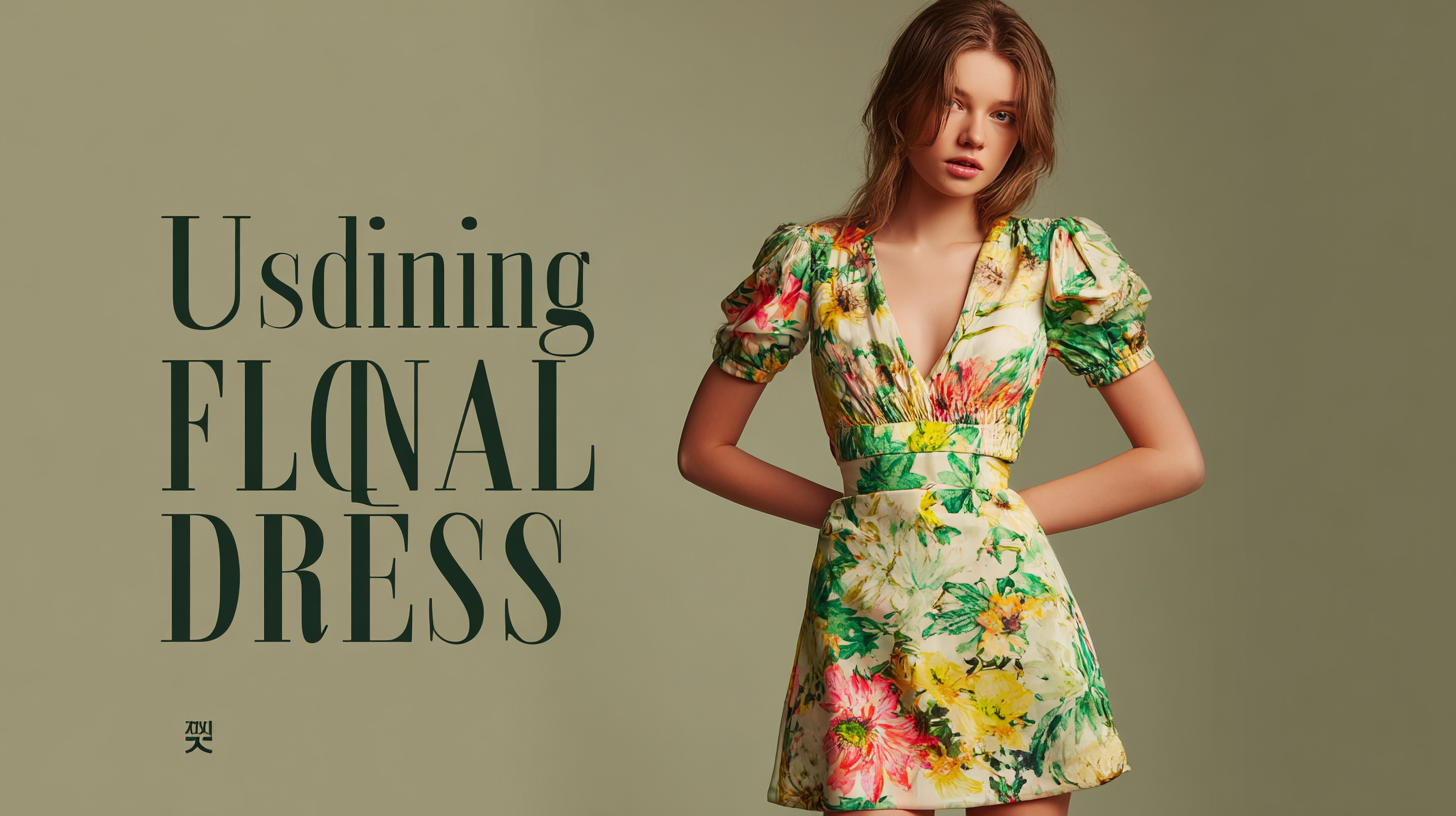Welcome to the TopShow!Garment manufacturing !
OEM, ODM Service,Custom color Custom logo,Custom Your Own Brand Online!
Welcome to the TopShow!Garment manufacturing !
OEM, ODM Service,Custom color Custom logo,Custom Your Own Brand Online!
The global demand for fashion, particularly the Casual Floral Mini Dress, has reached unprecedented heights, with the apparel market projected to grow by 4.8% annually, reaching approximately $2.25 trillion by 2025, according to market research by Statista. As consumers increasingly seek unique designs that embody both comfort and style, the significance of understanding industry production standards becomes paramount. The phrase "中国制造,全球共享,品质值得信赖" highlights the importance of Chinese manufacturing in the global supply chain, where quality and reliability are essential. Recent reports indicate that over 30% of women in the U.S. prefer floral prints during the spring and summer seasons, showcasing the enduring appeal of Casual Floral Mini Dresses. By aligning with established production standards and best practices, manufacturers can ensure that they not only satisfy consumer preferences but also uphold the trustworthy reputation of Chinese-made garments on the international stage.

In the ever-evolving casual dress industry, production standards play a crucial role in ensuring quality and sustainability. According to a 2021 report by the Fashion Institute of Technology, approximately 75% of consumers are increasingly concerned about the ethical implications of their clothing choices. This trend has propelled brands to adhere to stricter industry production standards that prioritize sustainable practices, from sourcing materials to labor conditions. For floral mini dresses, which often use delicate fabrics such as cotton and rayon, the emphasis is on obtaining certifications that assure consumers of the fabric's organic origins and eco-friendly dye processes.

Moreover, the Global Fashion Agenda's 2022 report highlights that companies that implement robust production standards experience a 20% increase in customer loyalty. In the casual dress segment, adherence to these standards means not only meeting regulatory requirements but also exceeding consumer expectations for transparency and accountability. As brands phase out harmful production techniques, initiatives like the Sustainable Apparel Coalition's Higg Index serve as benchmark tools, guiding manufacturers in evaluating their environmental impact. With these standards in place, the casual floral mini dress can transition from mere fashion to a symbol of responsible consumerism.
When considering the best casual floral mini dresses, understanding the key materials and fabrics is essential for both comfort and style. Popular choices for these dresses often include lightweight cotton, which allows for breathability and ease during warm weather. Cotton is not only easy to maintain, but its natural fibers offer a soft touch against the skin, making it a go-to fabric for everyday wear. Furthermore, cotton blends with polyester or rayon can enhance durability while retaining a pleasing drape, helping the dress maintain its shape throughout the day.
Another fabric frequently used in floral mini dresses is viscose. This semi-synthetic fiber is derived from natural materials and is known for its soft and silky feel. Viscose drapes beautifully, which is perfect for creating flattering silhouettes. Additionally, the vibrant dyes used on viscose can bring floral patterns to life, making any dress truly stand out. For cooler months, dresses made from heavier fabrics like linen or twill can provide a cozy yet chic option, allowing floral prints to be a staple in any wardrobe, regardless of the season.

When it comes to producing casual floral mini dresses, quality control measures play a crucial role in ensuring that each garment meets industry standards. Designers and manufacturers must institute rigorous processes to monitor fabric quality, stitching, and finishes throughout production. By adhering to these standards, brands can prevent defects that not only compromise the aesthetic appeal but also the longevity of the dress.
Tips for maintaining quality control include conducting regular inspections throughout the manufacturing process. It’s essential to involve quality control teams at every stage, from the selection of raw materials to the final inspection before shipping. Additionally, implementing standardized testing for fabric durability and colorfastness can significantly improve the overall quality of floral dresses.
Investing in training for staff on quality benchmarks is another effective measure. Knowledgeable employees can identify potential issues early on, leading to timely adjustments and fewer costly reworks. Furthermore, gathering customer feedback post-purchase can provide valuable insights that guide future production improvements, ensuring that casual floral mini dresses not only look great but are also made to last.
| Production Standard | Quality Control Measure | Expected Outcome | Frequency of Checks |
|---|---|---|---|
| Fabric Quality | Inspection of fabric swatches | Ensure softness, durability & colorfastness | Every batch |
| Stitching Standards | Seam strength testing | Prevent seam breaks | Daily |
| Color Consistency | Color matching tests | Uniform appearance across products | Per production run |
| Sizing Accuracy | Fit samples measured against standards | Correct sizing for consumers | Pre-release |
| Finish Quality | Final garment inspection | No defects, clean finish | Every item |
In recent years, sustainability has become a pivotal consideration in the fashion industry, particularly in the production of
casual floral mini dresses. Brands are increasingly prioritizing eco-friendly practices in their fabric sourcing.
This involves selecting materials that are not only stylish but also environmentally responsible, such as organic cotton,
Tencel, or recycled polyester. These fabrics significantly reduce the impact on the planet by minimizing water usage and chemical inputs during cultivation and processing.
Additionally, sustainable production practices extend beyond just the materials used. Many manufacturers are adopting ethical labor practices, ensuring fair wages and safe working conditions for garment workers.
By integrating sustainable fabric sourcing with responsible production techniques, the fashion industry can significantly contribute to a more ethical approach to consumerism.
The trend towards sustainability not only benefits the environment but also resonates with consumers who are increasingly seeking brands that align with their values.
As the demand for casual floral mini dresses rises, so does the importance of these responsible practices in the industry.
The fashion landscape is constantly evolving, and floral mini dresses are no exception. Current trends play a crucial role in shaping industry production standards, influencing everything from fabric selection to design intricacies. Designers are increasingly focusing on sustainable materials and ethical manufacturing practices, driven by a growing consumer awareness regarding environmental impacts. This trend not only reflects a shift in consumer values but also establishes new benchmarks for quality and sustainability in the production of casual floral mini dresses.
Moreover, the seasonal shifts and cultural influences significantly dictate the styles and patterns emerging in floral mini dresses each year. As the demand for versatility rises, designers are creating collections that cater to both casual and formal occasions. This has led to an emphasis on innovative designs, such as bold prints and mixed textures, while ensuring that production standards maintain a commitment to craftsmanship. By integrating trend analysis into their production processes, brands can better align with consumer desires, ultimately elevating the overall quality and appeal of floral mini dresses in the marketplace.
